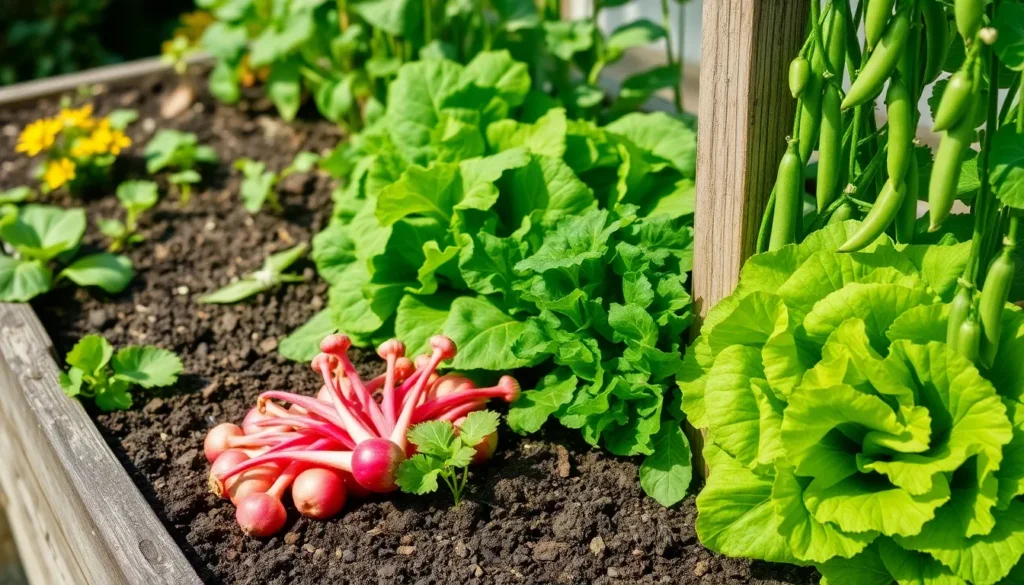Imagine stepping into your garden, the sun warming your skin, as you witness the miracle of growth unfold at a remarkable pace. Whether you’re planting your very first seed or have a seasoned gardener’s touch, the thrill of watching fast-growing vegetables transform from tiny sprouts to bountiful harvests never loses its magic. This guide isn’t just a list; it’s a gateway to the vibrant world of gardening where success is measured in days and weeks, not months.
For beginners eager to see quick results or experienced cultivators looking to maximize their yield, fast-growing vegetables offer a bounty of rewards. These plants promise not only a satisfying gardening experience but also the practical benefit of fresh produce at your fingertips in record time. With each page, you’ll gain insights and tips that will have you confidently coaxing the lushest greens and the plumpest reds from your garden beds. Let’s embark on this journey together, where every seed sown is a promise of nature’s swift, generous return.
Radishes (Cherry Belle)
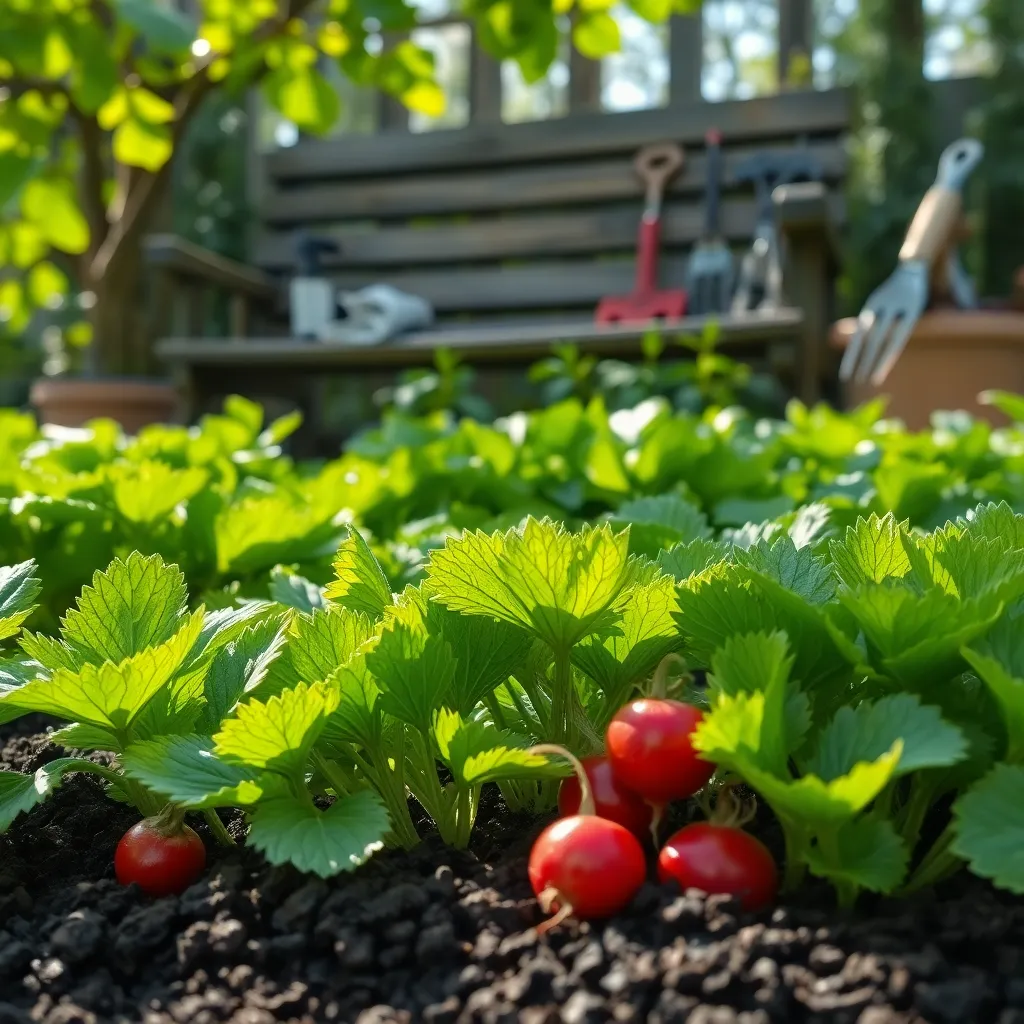
Radishes, particularly the ‘Cherry Belle’ variety, are a fantastic choice for gardeners seeking quick results. Known for their rapid growth, they can be harvested in as little as 22 to 30 days, making them a perfect candidate for fast gratification in the garden.
To grow ‘Cherry Belle’ radishes successfully, plant them in loose, well-draining soil enriched with organic matter. Aim for a soil pH between 6.0 and 7.0 to ensure optimal growth, and avoid compacted soil as it can hinder root development.
Ensure consistent moisture by watering radishes regularly, but be careful not to overwater, as this can lead to root rot. A good practice is to water deeply once a week or more frequently in lighter amounts during dry spells, keeping the soil consistently moist but not soggy.
For best results, plant radish seeds in a sunny location that receives at least six hours of direct sunlight each day. Thin seedlings to about one inch apart once they sprout to give each plant ample room to develop its roots.
Lettuce (Buttercrunch)
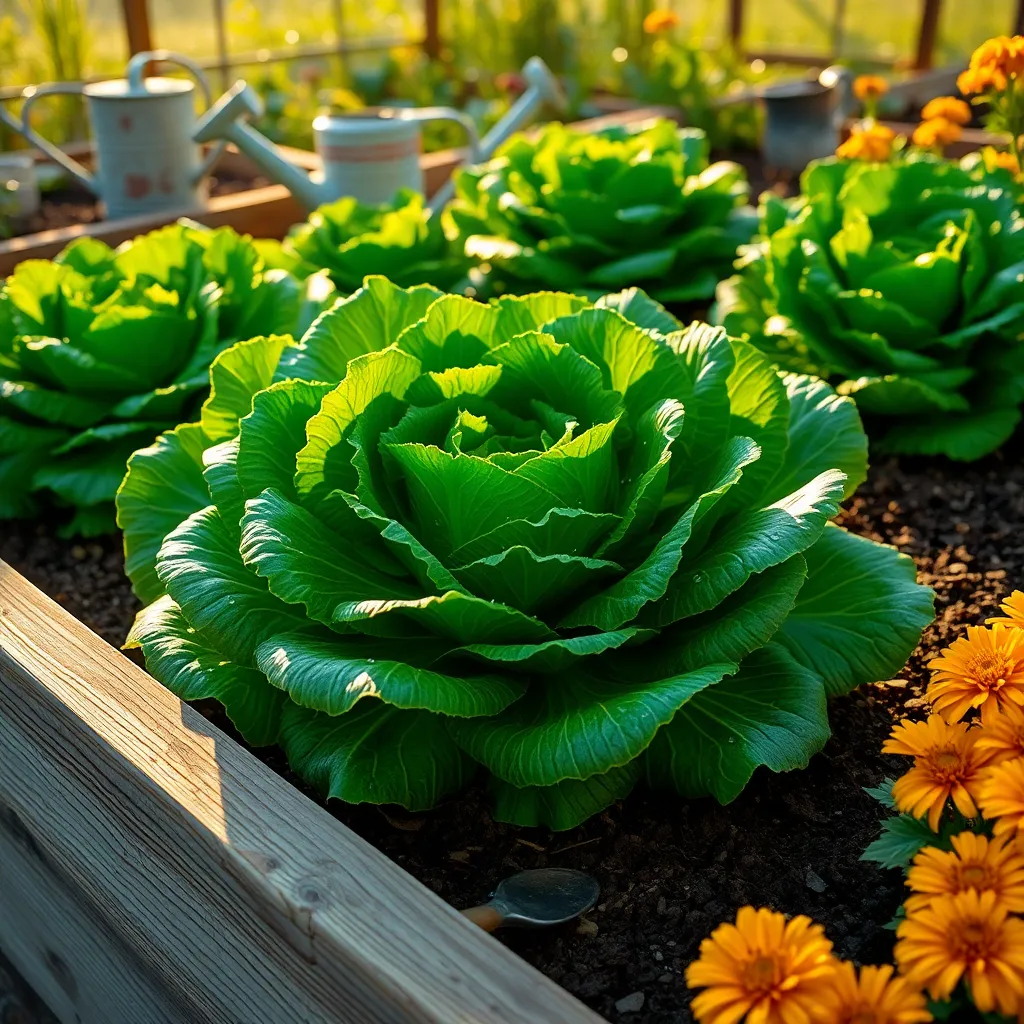
Buttercrunch lettuce is a fast-growing variety that offers a rewarding yield with minimal effort. This type of lettuce is perfect for those new to gardening, as it thrives in cool weather and can be grown in both spring and fall.
To get started, plant your seeds in loose, well-draining soil enriched with organic matter. Aim for a slightly acidic to neutral pH level—around 6.0 to 7.0—for optimal growth.
Water your Buttercrunch lettuce regularly to keep the soil moist, but be careful not to overwater, as soggy soil can lead to root rot. Using a mulch layer can help retain moisture and keep weeds at bay, which is especially beneficial during warmer spells.
For gardeners looking to enhance their harvest, consider using a succession planting technique. By planting new seeds every two weeks, you can enjoy a continuous supply of fresh lettuce throughout the growing season.
Spinach (Bloomsdale Long Standing)
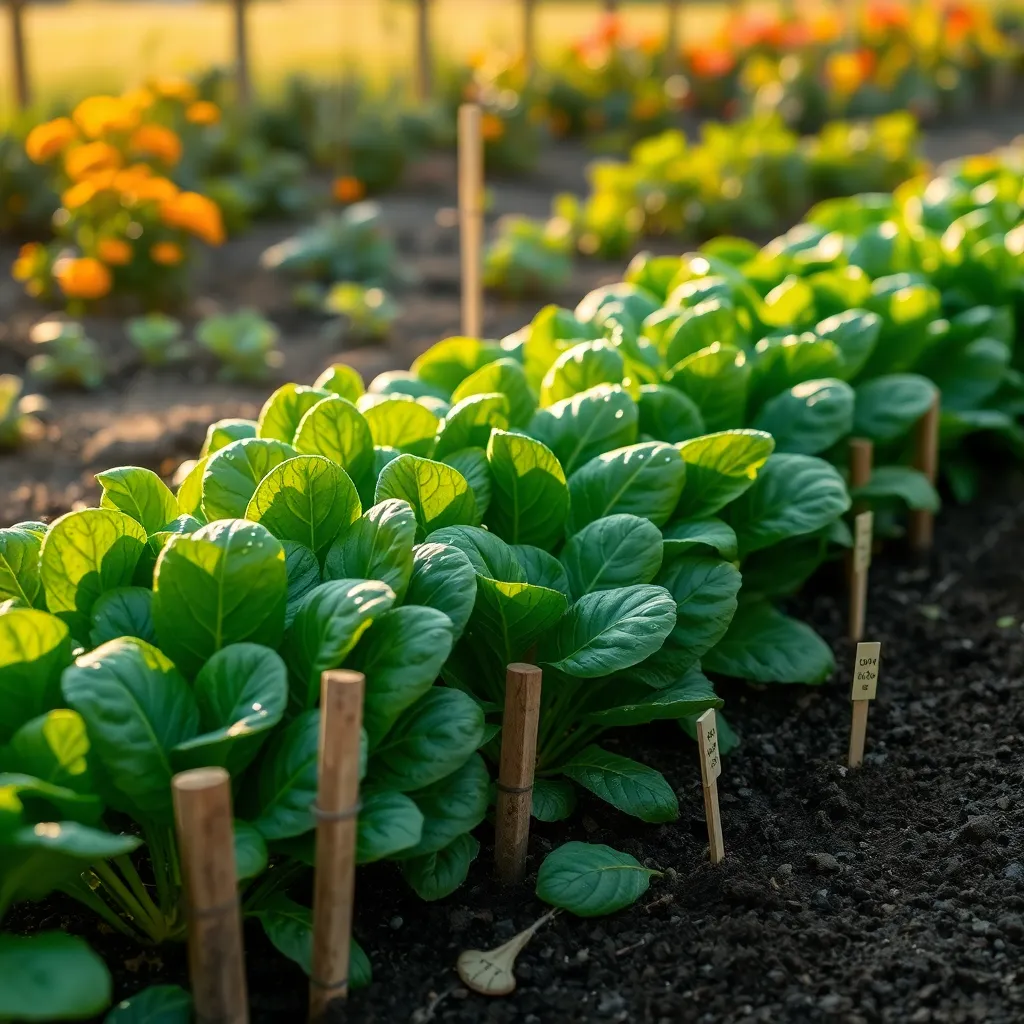
Spinach, particularly the Bloomsdale Long Standing variety, is a fantastic choice for those seeking fast-growing greens. Known for its crinkly, dark green leaves, this spinach variety is ideal for salads and cooking alike.
To start growing Bloomsdale Long Standing spinach, you’ll need well-draining soil enriched with organic matter. It’s essential to sow the seeds directly in the garden, as spinach doesn’t transplant well.
Ensure your spinach patch receives full sun to partial shade, which is crucial for healthy growth. Regular watering is vital; aim for consistent moisture but avoid waterlogging to prevent root rot.
For optimal growth, thin seedlings to about 3 inches apart once they reach about 2 inches tall. This practice ensures that each plant has sufficient space and resources to thrive.
Experienced gardeners can extend the harvest by planting successive crops every two weeks. Consider using floating row covers to extend the growing season and protect against early frost.
Zucchini (Black Beauty)
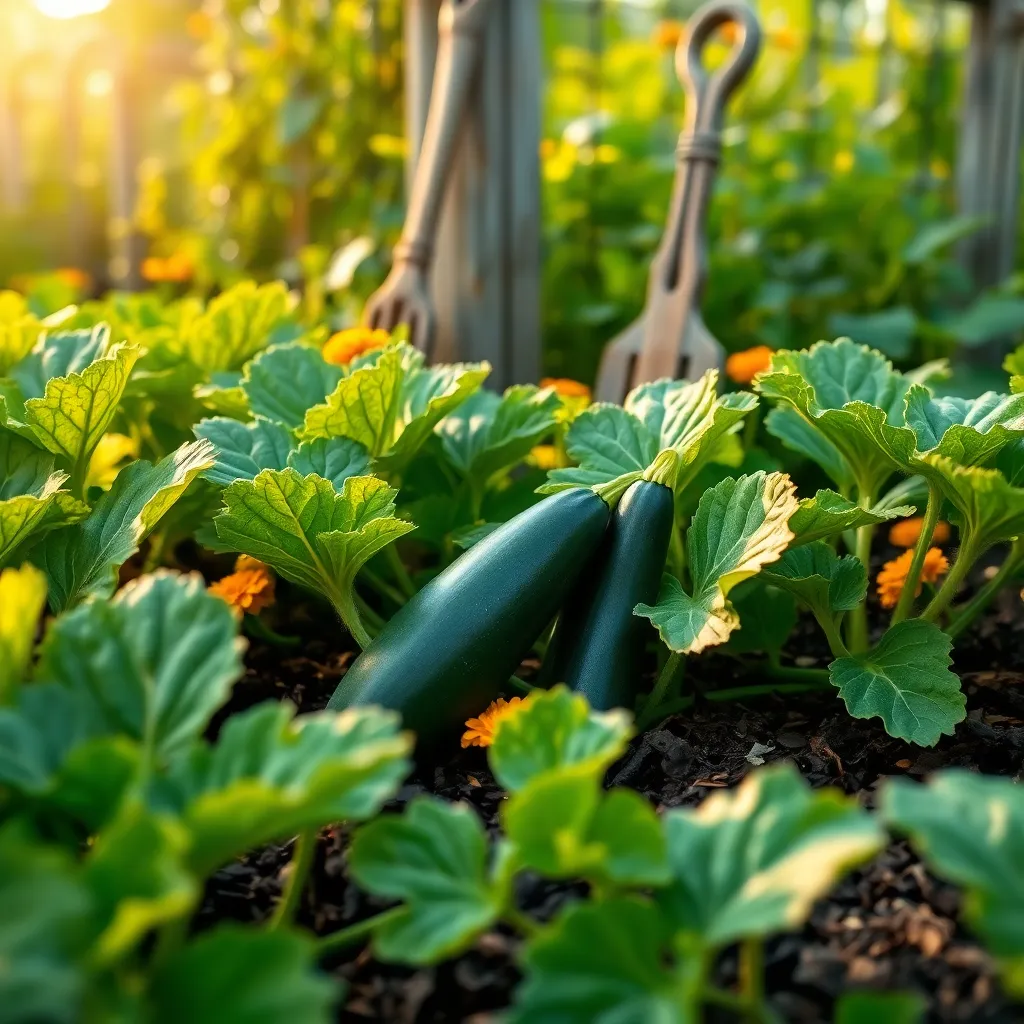
Black Beauty zucchini is a fast-growing summer squash variety that thrives in warm weather and is ideal for both novice and experienced gardeners. This variety is known for its dark green, glossy fruits that are not only delicious but also prolific, yielding a bountiful harvest with proper care.
To ensure a successful zucchini crop, plant Black Beauty seeds directly in well-drained soil enriched with organic matter. Providing full sun exposure and spacing plants about 2 to 3 feet apart will help them grow vigorously and prevent diseases.
Regular watering is crucial, especially during dry spells, aiming to keep the soil consistently moist but not waterlogged. A thick layer of mulch can help retain moisture and suppress weeds, offering a low-maintenance way to enhance the growing conditions.
For advanced gardeners, consider succession planting every two weeks to ensure a continuous harvest throughout the growing season. Additionally, hand-pollinating the flowers can increase fruit set if pollinators are scarce in your area.
Basil (Genovese)
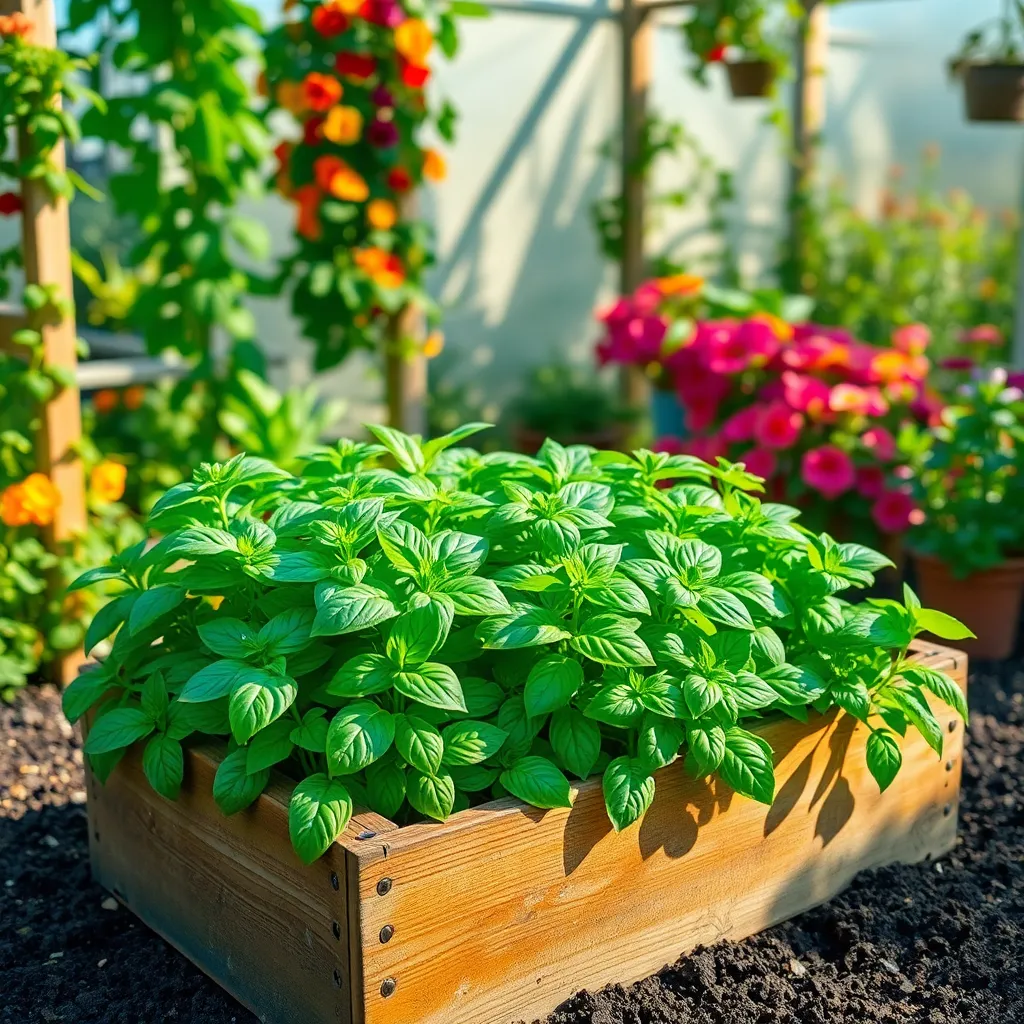
Basil (Genovese) is a fast-growing herb that can transform your culinary experiences with its aromatic leaves. It thrives in warm conditions, making it ideal for summer planting, and can be started indoors or directly in the garden.
To ensure lush growth, plant basil in well-draining soil enriched with organic matter. Regular watering is essential, but avoid overwatering, as basil prefers soil that is consistently moist but not waterlogged.
For beginners, sowing seeds 1/4 inch deep and keeping them in a sunny spot will yield the best results. Cover the seeds lightly with soil, and expect germination within 5 to 10 days under optimal conditions.
Advanced gardeners can experiment with companion planting; basil does well alongside tomatoes, enhancing both growth and flavor. Regularly pinch off the flower buds to encourage leaf growth and prolong the plant’s life cycle.
Conclusion: Growing Success with These Plants
As you embark on the rewarding journey of nurturing both your garden and relationships, remember the five key concepts we’ve explored: communication as essential as watering your plants regularly, patience in growth both in gardens and love, adaptability in facing unexpected challenges, shared goals like planting seeds together, and mutual support that strengthens roots and bonds alike. By embracing these principles, you create a thriving environment for both your vegetables and your relationships.
To put these insights into practice, choose one concept to focus on this week. Perhaps start a small garden together or have a conversation about shared goals. This tangible step will not only enrich your connection but also enhance your personal growth.
I encourage you to save this article as a handy guide to revisit whenever you need a reminder or a boost of inspiration. Bookmark it now, and let it be your companion in cultivating a flourishing relationship.
Remember, the seeds of today are the blossoms of tomorrow. Your commitment to growth, whether in your garden or with loved ones, paves the way for a future filled with beauty and connection. Let’s grow together!

